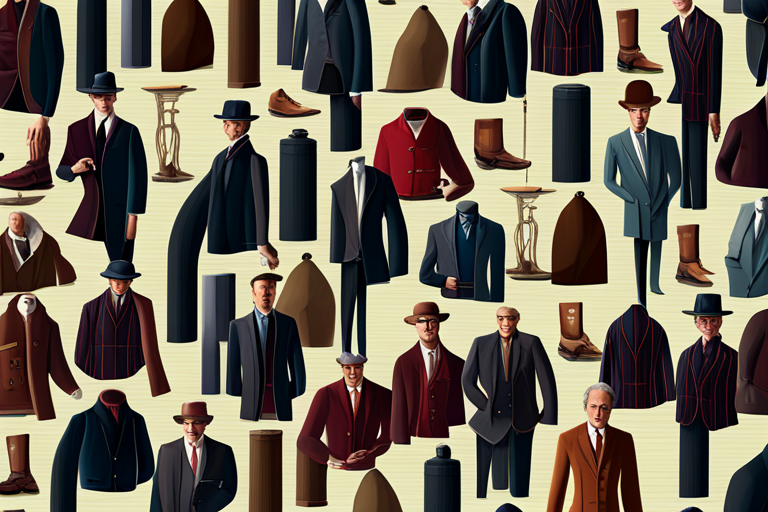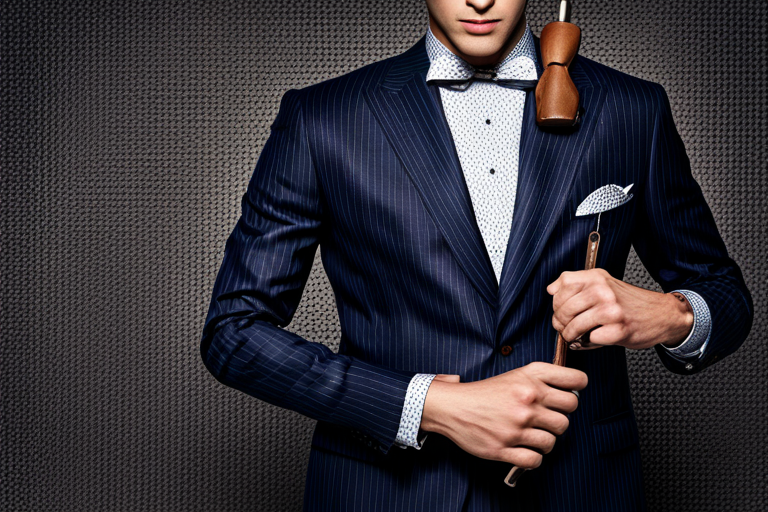I. Introduction
A. Importance of dressing appropriately for architectural tours and events
When attending architectural tours and events, it is essential to dress appropriately. Your attire not only reflects your personal style but also shows respect for the occasion and the organizers. Dressing appropriately can enhance your overall experience and make a positive impression on others.
B. Purpose of the essay
The purpose of this essay is to provide guidance on how to dress appropriately for architectural tours and events. We will explore various aspects of dressing, including professionalism, comfort, modesty, accessorizing, grooming, practicality, and occasion-appropriate attire. By following these guidelines, you can ensure that you are dressed sophisticatedly and ready to fully enjoy and appreciate the architectural experience.
II. Understanding the context
A. Researching the dress code for the specific event or tour
Before attending an architectural tour or event, it is crucial to research the dress code. Some events may have specific guidelines, such as formal attire or a particular theme. Understanding the dress code will help you choose the appropriate outfit and avoid any potential embarrassment.
B. Considering the location and cultural norms
The location of the tour or event plays a significant role in determining the appropriate attire. Different regions and cultures may have specific dress norms and expectations. It is essential to consider these factors to show respect for the local customs and traditions.
C. Identifying the level of formality
Architectural tours and events can vary in terms of formality. Some may be more casual, while others may require a more formal dress code. Identifying the level of formality will help you select the right clothing and accessories to match the occasion.
III. Dressing professionally
A. Choosing well-fitted and tailored clothing
Opt for well-fitted and tailored clothing to create a polished and professional look. Ill-fitting clothes can detract from your overall appearance. Consider getting your garments tailored to ensure they fit you perfectly.
B. Opting for neutral colors and classic styles
Neutral colors, such as black, gray, navy, and beige, are timeless and versatile. They exude sophistication and are suitable for most architectural tours and events. Classic styles, such as a tailored suit or a tailored dress, are always a safe choice.
C. Avoiding casual or overly trendy attire
While it’s important to showcase your personal style, it’s best to avoid casual or overly trendy attire for architectural tours and events. Opt for more formal and sophisticated clothing to maintain a professional appearance.
IV. Dressing comfortably
A. Selecting appropriate footwear for walking and standing
Architectural tours often involve a significant amount of walking and standing. Choose comfortable footwear that provides adequate support. Avoid high heels or uncomfortable shoes that may hinder your ability to fully enjoy the tour.
B. Considering the weather and dressing in layers
Check the weather forecast before attending an architectural tour or event. Dress in layers to accommodate any changes in temperature throughout the day. This way, you can stay comfortable regardless of the weather conditions.
C. Prioritizing comfort without compromising style
While comfort is essential, it doesn’t mean you have to sacrifice style. Look for clothing made from breathable fabrics that allow for ease of movement. Choose outfits that strike a balance between comfort and sophistication.
V. Dressing modestly
A. Respecting the architectural environment and its cultural significance
When visiting architectural sites, it is important to dress modestly out of respect for the environment and its cultural significance. Avoid clothing that may be considered revealing or inappropriate for the setting.
B. Avoiding revealing or inappropriate clothing
Avoid clothing that is too revealing or provocative. Opt for outfits that cover the shoulders, chest, and knees. This will help maintain a respectful and appropriate appearance.
C. Adhering to any specific dress code guidelines
Some architectural tours or events may have specific dress code guidelines that require modest attire. It is crucial to adhere to these guidelines to show respect for the organizers and the cultural significance of the architecture.
VI. Accessorizing appropriately
A. Choosing accessories that complement the outfit and occasion
Accessories can elevate your outfit and add a touch of sophistication. Choose accessories that complement your attire and the occasion. For example, a statement necklace or a stylish watch can enhance your overall look.
B. Avoiding excessive jewelry or accessories that may be distracting
While accessories can enhance your outfit, it’s important not to overdo it. Avoid excessive jewelry or accessories that may distract from the architectural experience. Keep it simple and elegant.
C. Considering the practicality of accessories for the tour or event
Consider the practicality of your accessories for the architectural tour or event. For example, if you will be walking or exploring outdoor spaces, opt for a smaller bag or crossbody style to keep your hands free.
VII. Paying attention to grooming
A. Maintaining a clean and well-groomed appearance
Personal grooming is essential when attending architectural tours and events. Ensure that your clothing is clean and wrinkle-free. Pay attention to details such as ironing your clothes, polishing your shoes, and maintaining a neat appearance.
B. Ensuring hair and nails are well-kept
Make sure your hair is well-groomed and styled appropriately for the occasion. Keep your nails clean and neatly trimmed. These small details contribute to an overall polished look.
C. Paying attention to personal hygiene
Maintaining good personal hygiene is crucial when attending architectural tours and events. Ensure that you are clean and fresh, with brushed teeth and a pleasant fragrance. This will help you feel confident and make a positive impression.
VIII. Considering the practicality of clothing
A. Opting for clothing that allows ease of movement
Choose clothing that allows for ease of movement, especially if the architectural tour involves climbing stairs or exploring different areas. Avoid restrictive clothing that may hinder your ability to fully enjoy the experience.
B. Choosing fabrics that are breathable and comfortable
Select fabrics that are breathable and comfortable, especially if the tour or event takes place in warm weather. Fabrics like cotton, linen, or lightweight wool are excellent choices that will keep you comfortable throughout the day.
C. Considering the functionality of clothing for the tour or event
Consider the functionality of your clothing for the architectural tour or event. For example, if you will be visiting a construction site, opt for clothing that provides protection and durability, such as sturdy pants and closed-toe shoes.
IX. Dressing appropriately for the occasion
A. Adapting the outfit to the specific event or tour theme
If the architectural tour or event has a specific theme, adapt your outfit accordingly. For example, if the event focuses on modern architecture, consider wearing contemporary and sleek clothing to align with the theme.
B. Considering the time of day and the nature of the event
The time of day and the nature of the event should also influence your outfit choice. Daytime events may call for lighter and more casual attire, while evening events may require more formal or elegant clothing.
C. Dressing in a way that shows respect for the organizers and participants
Dress in a way that shows respect for the organizers and participants of the architectural tour or event. Your attire reflects your professionalism and consideration for others. Dressing appropriately demonstrates your appreciation for the occasion.
X. Dressing to make a good impression
A. Recognizing the importance of first impressions
First impressions are crucial, especially in professional and social settings. Dressing appropriately for architectural tours and events helps create a positive first impression and sets the tone for interactions with others.
B. Dressing in a way that reflects professionalism and respect
By dressing professionally and appropriately, you convey a sense of professionalism and respect for the architectural tour or event. This can lead to more meaningful connections and networking opportunities.
C. Considering the potential networking opportunities
Architectural tours and events often provide networking opportunities with professionals in the field. Dressing appropriately can help you make a positive impression and establish connections that may be beneficial for your career or personal interests.
XI. Dressing to enhance the architectural experience
A. Understanding the impact of clothing on personal confidence
When you dress well, you feel more confident and self-assured. This confidence can enhance your overall experience during architectural tours and events, allowing you to fully appreciate the beauty and significance of the architecture.
B. Dressing in a way that enhances the appreciation of architecture
Your attire can complement and enhance the architectural experience. By dressing sophisticatedly, you create a harmonious visual connection between yourself and the architectural surroundings, fostering a deeper appreciation for the design and craftsmanship.
C. Recognizing the role of clothing in creating a positive mindset
Clothing plays a significant role in creating a positive mindset. When you dress appropriately and feel good about your appearance, you are more likely to approach the architectural tour or event with a positive and open mindset, ready to absorb and appreciate the architectural wonders.
XII. Dressing sophisticated on a budget
A. Shopping for affordable yet stylish clothing options
Dressing sophisticated doesn’t have to break the bank. Look for affordable yet stylish clothing options. Explore thrift stores, online sales, and discount retailers to find quality pieces at a fraction of the price.
B. Utilizing accessories to elevate a simple outfit
Accessories can transform a simple outfit into a sophisticated ensemble. Invest in a few key accessories, such as a statement belt, a stylish scarf, or a classic handbag, to elevate your overall look without spending a fortune.
C. Taking advantage of sales and discounts
Keep an eye out for sales and discounts on designer or high-quality clothing. Sign up for newsletters or follow your favorite brands on social media to stay informed about promotions and special offers. This way, you can dress sophisticatedly without breaking your budget.
XIII. Conclusion
A. Recap of the importance of dressing sophisticated for architectural tours and events
Dressing appropriately for architectural tours and events is essential to show respect for the occasion, the organizers, and the architectural environment. It enhances your overall experience and allows you to fully appreciate the beauty and significance of the architecture.
B. Final thoughts on the impact of clothing on personal and professional experiences
Clothing plays a significant role in personal and professional experiences. By dressing sophisticatedly, you not only make a positive impression on others but also boost your own confidence and mindset. Dressing appropriately for architectural tours and events can lead to meaningful connections, enhanced appreciation of architecture, and a more enjoyable overall experience.
FAQ
Q: What should I wear for a formal architectural event?
A: For a formal architectural event, opt for a tailored suit or a sophisticated dress. Choose neutral colors and classic styles to exude elegance and professionalism.
Q: Can I wear casual attire for an architectural tour?
A: While some architectural tours may allow for more casual attire, it is best to dress professionally and sophisticatedly to show respect for the occasion and the architectural environment.
Q: Are there any specific guidelines for dressing modestly during architectural tours?
A: When dressing modestly for architectural tours, avoid revealing or inappropriate clothing. Opt for outfits that cover the shoulders, chest, and knees to maintain a respectful appearance.
Q: How can I accessorize appropriately for an architectural event?
A: Choose accessories that complement your outfit and the occasion. Avoid excessive jewelry or accessories that may distract from the architectural experience. Consider the practicality of accessories for the tour or event.
Q: Is personal grooming important for architectural tours and events?
A: Yes, personal grooming is crucial for architectural tours and events. Maintain a clean and well-groomed appearance, paying attention to details such as hair, nails, and personal hygiene.





